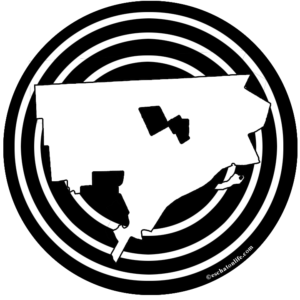
Many across Detroit and the world have tuned into the latest Detroit Kickstarter kitsch, a proposed Robocop Statue across from the (in)famous Michigan Central Station. You can learn more about it and take in some of the feedback the project is getting from Detroiters at the Imagination Station’s Facebook page. The statue has been written about extensively, but I’d like to shift the focus from Robocop to some blind spots that many white artist/entrepreneurs often succumb to while striving to engage Detroit’s diverse communities and respect its rich history.
First, I’m not a fan. Just to get it off my chest, I’ll share that, if this statue gets built, I’m really not looking forward to going to the park, which is right across the expressway from our home, and explaining to my son the who and why of Robocop. I’ll have to share the dystopian and dysfunctional narrative, mediating culture being a part of my role as a parent, but I’m not a fan of carceral robotics and would like to have that conversation a little later in his life. Though this isn’t my main thrust, I share it in the hope it may reframe the statue for some from the eyes of our city’s youth.
And really, that just leads up to some big questions for me, and they are part of a greater issue that I’ve spent the past five years trying to mindfully navigate, yet still barely grasp. What we’ve been striving towards is the ability to see the work Angela and I share from different perspectives. We do this because Angela and I value perspectives outside of the highly influential circles of predominantly white artist/entrepreneurs that gather and organize Detroit’s return to what we consider to be a rather sterile version of a “world class” city.
We seek these perspectives because we believe that racial disparity is the greatest threat to succesfully co-creating sustainable communities in Detroit. So, how can we, as white artist/entrepreneurs, truly engage? How do we not only share with, but also learn from the communities around us? Is it possible to even take the lead from the communities that we profess to be in tune with?
And most importantly to the here and now, for Robocop and the folks at Imagination Station is, how do we navigate community dissent? Due to the defensive nature of some of the facebook posts I’ve read, I’ve gathered that, with Robocop, the organizers at the Imagination Station have received their first opportunity to hold themselves accountable to community members who have expressed dissent to a project. That’s a tough one. It’s the point where your community engagement policies and procedures are put to the test, or it’s the point where you discover they were there simply as a symbolic green light and good PR.
It’s really a pickle that I’ve been in for the past few years. At Detroit Evolution we’ve made mistakes that we are still striving to amend. I don’t have the answers, but I do know that it takes a great deal more time to engage at the level I feel is requisite to build something that is not only meaningful, but sustainable. Taking time really isn’t celebrated in crowd-based funding circles. And really, it’s the last thing that anyone attempting to get a project off the ground wants to hear, especially white artist/entrepreneurs, who are used to being able to do what they please without being held accountable to anyone.
Here’s an approach: the physical infrastructure in Detroit is broken, which many outsiders consider to be a green light. Projects are planned, funded and executed under the assumption that the community infrastructure is broken as well. If people tried to do half the things that have been done in Detroit in a place with a recognizable community infrastructure, they would be blocked. The issue here is that Detroit’s community infrastructure is not broken, it has simply taken on forms that many don’t see.
This isn’t a radical idea; if the community center is blown out, it doesn’t mean that the community doesn’t gather, they just gather in places that many wouldn’t consider valid spaces. After that it comes down to the fact that many don’t want to see or hear from the community, because it means they need to slow down and not only listen, but possibly stop or shift their project or idea.
Co-creating within a community can be hard on your ego and even harder on your art project. I know, I’m recovering from a poorly organized Kickstarter project that brought our values about community engagement into question as a half-finished Dome. Heck, I’m a white guy who opened up a “Laboratory” in a predominantly African-American city! I’m learning, or unlearning as I’ve come to frame it.
We all have a great deal of work ahead of us if we are going to step into the future in a meaningful, mindful and equitable manner. I think that it can be done and believe that, if we are able to pull it off, it will not look like anything we have seen before. It will take Real PR, real public relations, not marketing or pushing flavor of the week memes.
I encourage the organizers of this project and The Imagination Station to stand strong on their touted commitment to the community. I highly recommend trying to listen to the voices that can’t yet be heard, the ones that you don’t want to hear and, even if it means stepping down or shifting gears, following the community’s lead. I think a great deal of relationship building could be facilitated by mindfully stepping down from this precipice. I wish the organizers all the best in mediating this challenge.
©EschatonLife

